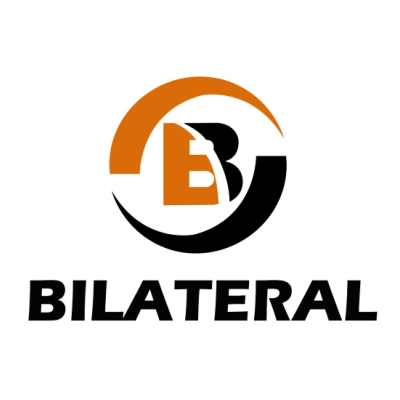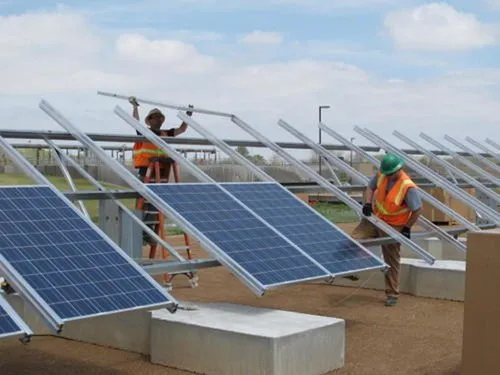Properly installing the mounting rails is one of the most critical steps to ensure the long-term safety and efficiency of any solar PV system. Whether you’re working on a residential rooftop, a commercial facility, or a utility-scale solar farm, the rail structure forms the foundational backbone of the entire panel array. This guide will walk you through the most important considerations, techniques, and best practices to improve installation accuracy, reduce system failure risk, and extend service life.
Why Are Solar Mounting Rails So Essential?
Solar panel rails do far more than just hold panels in place. They perform several key functions that directly impact system safety and performance:
- Even Load Distribution: Rails evenly transfer the weight of the solar panels and wind/snow loads across the mounting surface.
- Structural Stability: High-quality rails can resist harsh weather conditions like typhoons, storms, and heavy snow.
- Precision Layout: Proper rail alignment ensures a clean and professional appearance of the panel array.
- Simplified Maintenance: A well-designed rail layout allows easier grounding, wiring, and future maintenance.
Choosing the Right Solar Mounting Rail: Types, Materials, and Applications
Selecting the appropriate rail type is the foundation of a reliable and efficient solar system. The choice depends on several key factors, including roof type, environmental exposure, panel size, and structural load requirements. Below is a detailed comparison of rail materials and structures commonly used across different solar applications.
Common Rail Materials and Their Use Cases
| Material Type | Common Grades | Key Features | Recommended Use |
|---|---|---|---|
| Aluminum Alloy | 6061 / 6063-T5 (Anodized) | Lightweight, corrosion-resistant, easy to fabricate | Standard for residential and commercial rooftops |
| Stainless Steel | SUS304 / SUS316 | Superior strength and corrosion resistance | Coastal zones, industrial parks, high-salinity regions |
| Hot-Dip Galvanized Steel | Q235 (Zinc Coated) | Cost-effective, good durability under moderate corrosion | Ground-mounted systems with tight budgets |
Structural Designs of Mounting Rails
| Rail Type | Material | Characteristics | Common Applications |
| T-Rail | Aluminum Alloy | High compatibility, universal mounting | Residential, commercial, and distributed PV projects |
| U-Rail | Aluminum / Galvanized Steel | Stable and easy cable routing | Flat rooftops and modular systems |
| C-Rail | Aluminum / Galvanized Steel | Simplifies mid-clamp installation, ideal for splicing | Utility-scale or heavy-duty projects |
| Z-Rail | Aluminum Alloy | Slim profile, visually clean | Metal roofs, standing seam, steel tiles |
| H-Rail | Aluminum / Stainless Steel | High load-bearing capacity | Industrial rooftops, large solar farms |
Installation Systems Based on Site Type
| Installation Style | Material | Mounting Method | Target Site |
| Rooftop Rail System | Aluminum / Stainless Steel | Installed using L-feet, brackets, and waterproof bases | Sloped tiles, metal sheet roofs, flat concrete roofs |
| Ground-Mount Rail System | Galvanized Steel / C-Rail | Anchored via piles or concrete bases | Utility-scale farms, agricultural PV installations |
| Balcony / Wall System | Aluminum Alloy | Flexible, compact, and lightweight | Small-scale residential or portable PV |
Environmental Adaptation: Choose Based on Location
| Scenario | Recommended Material / Structure | Purpose |
| High Corrosion Areas | SUS316 Stainless / Thick Anodized Aluminum | Long-lasting rust prevention |
| High Wind Zones | Heavy-duty C/H Rails + Reinforcements | Maintain strength in typhoon-prone regions |
| BIPV / Solar Carports | Thin-profile or Concealed Aluminum Rails | Blend with architecture, maintain visual aesthetics |
Fasteners and Connectors: Ensuring Secure Mounting
| Fastener Type | Primary Function | Recommended Material | Compatible Rail Types |
| Hex Bolts | Connect rails to L-feet or brackets | SUS304 / SUS316 | T, U, C, H rails |
| Socket Screws | Fix the mid and end clamps | SUS304 / SUS410 | T-type rails |
| Flanged Hex Nuts | Enhance locking when paired with bolts | SUS304 | Universal |
| Spring Nuts | Slide into rail grooves, hold fixtures | Galvanized or SUS304 | C, U, T-type rails |
| Slot Nuts | Mount clamps and grounding parts | SUS304 / Nickel-plated | C, U, T-type rails |
| Self-drilling Screws | Fix rails to metal roofs directly | Carbon Steel / SUS | Z-rails, steel sheet roofs |
| Grounding Clamps/Bolts | Enable proper system grounding | Tinned Copper / SUS | All types |
| Flat/Spring Washers | Improve load transfer, prevent loosening | SUS304 | All connections |
Spacing and Alignment: Precision Matters
| Category | Indicator/Tool | Recommended Values / Purpose |
| Rail Spacing – Standard | Assembly Length 1650–1800mm | 900mm – 1100mm |
| Rail Spacing – Large Panels | Panel Length > 1900mm | 1000mm – 1200mm |
| Ground Installations | Depends on Wind Load | ≤1200mm |
| Roof Installations | Structural Reinforcement | 950mm – 1100mm |
| Alignment Accuracy | Rail Height Difference | ≤2mm |
| Parallelism Between Rails | Rail-to-Rail Offset | ≤3mm/m |
| Lateral Misalignment | Same-Row Displacement | ≤5mm |
| Longitudinal Levelness | Max Tilt | ±10mm/m (≤1%) |
Recommended Tools: Laser level, chalk line, rangefinder, leveling shims, guide rail alignment jigs.
Thermal Expansion and Reserved Gaps
Aluminum rails expand and contract with temperature changes. Expansion gaps prevent rail deformation, structural stress, and panel warping.
Thermal Expansion Formula
ΔL = α × L × ΔT
Where:
- α ≈ 23 × 10⁻⁶ /°C (thermal expansion coefficient of aluminum)
- L = rail length (mm)
- ΔT = annual temperature variation (°C)
Suggested Expansion Gap Table
| Rail Length (mm) | Temperature Range (°C) | Suggested Gap (mm) | Typical Use |
| ≤ 2000 | 30–40°C | 3–5 mm | Residential rooftops |
| 2000–4000 | 40–60°C | 5–8 mm | Industrial rooftops, warm climates |
| ≥ 4000 | >60°C | ≥10 mm | Desert or alpine ground systems |
Gap Techniques:
- Leave the seam at the splicing points
- Allow one end to slide
- Use flexible connectors
- Avoid locking both ends rigidly
Waterproofing for Roof Penetrations
Roof leaks are a major risk. Every screw or hole must be sealed properly with gaskets, sealants, or layered waterproofing methods.
| Roof Type | Location | Waterproof Method |
| Tile Roof | Through-tile Holes | Flexible sleeves + sealant |
| Tile Roof | L-Foot Fixing Points | Butyl tape under tiles |
| Tile Roof | Rail Penetrations | EPDM gasket + sealant |
| Metal Roof | Self-drilling Screws | Use rubber washers, and avoid overtightening |
| Metal Roof | Standing Seam Clamps | No perforation needed |
| Flat Roof | Chemical Anchors | Seal hole + coat surface |
| Flat Roof | Ballast Mounts | Ensure drainage, no sealing required |
Waterproof Materials: EPDM gasket, aluminum tape, flexible sleeves, neutral silicone sealant
Construction Notes:
- Apply sealant before and after drilling
- Never glue during rain
- Conduct a water spray test post-installation
Grounding and Electrical Connection
All rails must be properly grounded per NEC/IEC standards. Use approved grounding clips, jumpers, and low-resistance connectors.
| Project Element | Key Data/Standard | Best Practice |
| Grounding Method | NEC 250, IEC 62548 | Use anti-corrosion grounding clips |
| Fixture Material | ASTM A153, ISO 9227 | Prefer stainless or hot-dip galvanized steel |
| Ground Contact Resistance | ≤ 1 milliohm | Clean oxidation before connection |
| Bolt Torque | 5–10 Nm | Avoid overtightening or under-tightening |
| Ground Points per Segment | Every 10 meters | Adjust per project spec |
| Ground Wire Cross-section | ≥ 6 mm² copper | Secure against vibration or loosening |
| Corrosion Protection | Anti-rust grease/sealant | Especially critical in coastal or humid zones |
Structural Inspection Checklist
| Inspection Item | What to Check | Reference / Guidance |
| Fixing Stability | Bolts tight, rail secured to base | Torque per manufacturer |
| Connection Integrity | No cracks or loose brackets | Match to drawings/manuals |
| Rail Straightness | No bending, uniform alignment | Deviation ≤5mm/m |
| Foundation Stability | No shaking or wobbles | Per building code |
| Waterproof Sealing | No leaks, sealants intact | Visual + water test |
| Grounding Validity | Tight, continuous grounding | NEC/IEC standard |
| Rigidity Under Pressure | No shaking or wobble | Manual pressure test |
Cable Management and Routing
| Category | Specification / Standard | Best Practice |
| Cable Type | IEC 62930 / UL 4703 | UV-resistant PV-rated cable |
| Layout Mode | NEC 690 / IEC 62548 | Neatly along rails with zip ties or channels |
| Ground Clearance | Local code (≥0.5 m) | Prevent water accumulation or damage |
| Bending Radius | ≥ 6× cable diameter | Maintain conductor integrity |
| Protective Measures | IEC 62790 | Use conduit or armor in exposed areas |
| Waterproofing Joints | IP65+ connectors | Prevent short circuits |
| Labeling | Project management spec | UV-stable labels for ID and maintenance |
| Shielding | IEC 60364-5-53 | Proper grounding for signal cables |
Recommended Accessories
| Accessory Name | Function | Material |
| Mid Clamp | Fix the panel between the modules | Aluminum + EPDM |
| End Clamp | Fix the end panel edge | Aluminum + stainless steel bolt |
| L-Bracket | Connect the rail to the roof surface | Stainless steel / anodized aluminum |
| Grounding Clamp | Conductive connection between rail & panel | Nickel-plated copper or stainless steel |
| Rail Splice | Connect two rail segments | Anodized aluminum |
FAQs
Q1: Can rails be mounted directly on metal roofs?
Yes. Use standing seam clamps for no-penetration installation.
Q2: What tools are needed for rail installation?
Impact drill, torque wrench, laser level, chalk line, guide cutter.
Q3: Should wind load be considered?
Absolutely. Use rails tested under wind tunnel simulation for high-wind areas.
Conclusion:
A successful solar installation starts with a reliable rail system. By choosing the right materials, ensuring correct spacing, waterproofing carefully, and securing electrical safety, you can build a PV array that lasts for decades.




